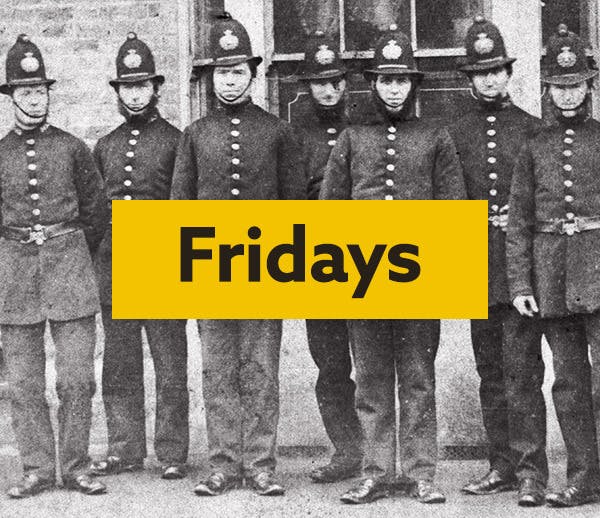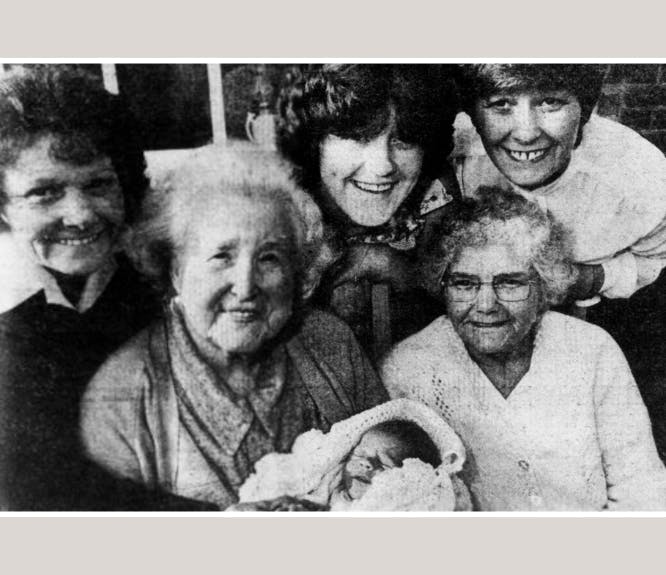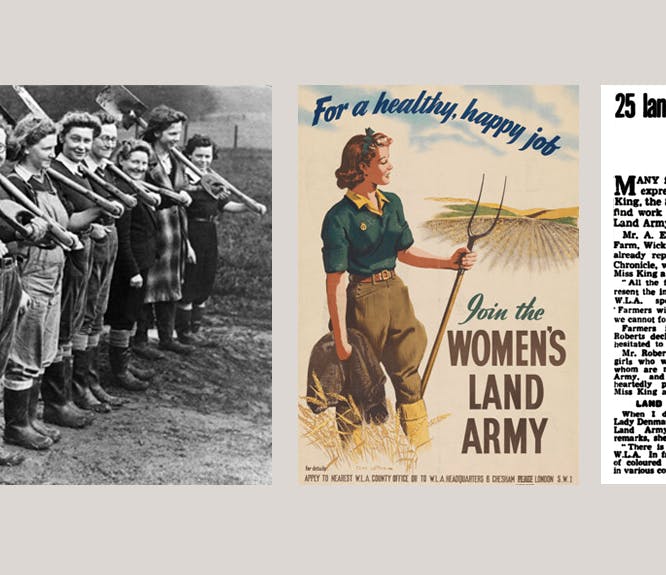How to trace ancestors that emigrated
6-7 minute read
By The Findmypast Team | December 17, 2024
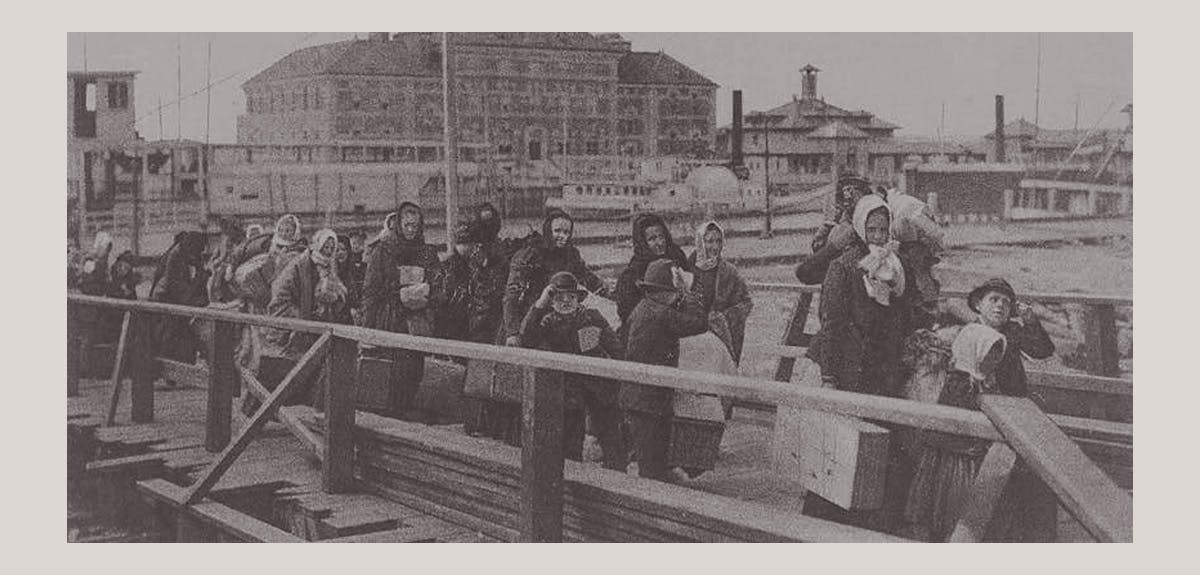
Uncover the stories of your travelling forebears with these ten top tips.
In the wake of the devastation of the Second World War, men and women from across the British Empire immigrated to England, invited by the British Empire with the promise of fair work and a better life.
21 June, 1948. The 1,027 immigrants who travelled to Britain from the Caribbean aboard the HMT Windrush disembarked in Tilbury, Essex. Unsure of the future that awaits them in this foreign land, they take the first step into the unknown.
They’d been invited by the British government – asked to help rebuild the nation in the wake of the devastating Second World War. They left their homes in search of a better life – but what awaited them was harsh working conditions, racism, and crucially, a huge upheaval from everything they’d ever known.
The Windrush generation was just one group of people who made a historic migration in the 20th century. Whether they started their lives in Jamaica, Ireland, Eastern Europe or England, some of your ancestors would have made significant journeys throughout their lives.
Each of us has migration stories within our family tree – your family may have fled war or famine, or perhaps moved for love. Use these tips and tricks to uncover emigrant ancestors in our wealth of family history records.
1. Establish timelines
In family history, it's always best to start with what you know and work backwards. Some of the best emigration discoveries come from finding your ancestor's parent's information in records. When working with travel records, it's important to have a clearly defined timeline created for your ancestor.
When you build your family tree with Findmypast, the timeline of your ancestor’s life is displayed clearly – making it easy to keep track of those essential details and important journeys.

Findmypast family tree.
It's also important to have a clear understanding of where your immigrant ancestor went. It will help you narrow things down in cases where the naturalisation process may have occurred over multiple courts and locations.
2. Check the attic for family keepsakes
Search around your house for clues that might tell you more about your family's travels. Look for family bibles, heirlooms from another country, postcards, journals, books with inscriptions written in them, photographs, or old passports. Don't leave any stone unturned, you never know what may be the key to unlocking vital migration details.
3. Did they go to America? Check US census records
Piled into crowded ships, carrying meagre belongings with just a small amount of money to their name. Whether escaping famine or seeking new employment, our migrant relatives faced the unknown in the hope of a better life in America.
If your ancestor, like so many, emigrated to the United States in the late 1800s and early 1900s, US census records are your first port of call. The US Census includes sections for citizenship and naturalisation, so it can help you determine which of your ancestors emigrated Stateside and where they came from.

An excerpt from the 1880 US Census showing parents' places of birth outside America.
As with all records, keep in mind that some of the details might be worth taking with a pinch of salt. Historical census information was collected verbally from the head of household and wasn't fact-checked by the enumerators.
US Census abbreviations
Abbreviations under the naturalisation columns in the census can provide clues about how your ancestors settled into their new lives and communities. Here are the common abbreviations in the naturalisation and citizenship columns:
- AL means that the person had not started the naturalisation process, or that they were still regarded as an ‘alien’ at the time the census was taken.
- PA indicates that your ancestor started the naturalisation process by turning in the initial papers.
- NA indicates that your ancestor had completed the naturalisation process and was a US citizen at the time of the census.
- NR means that this information was not collected.
4. Locate your ancestor's place of origin
If you can pinpoint where your immigrant ancestor lived before they moved, it will help you narrow your search as you explore records from their new country. You can often find this information in the records you've searched previously. For example, Birth, marriage, and death records can all reveal where your ancestor may have lived before journeying overseas. While census records can help you identify the country at the very least.
5. Cross-reference and double-check
Information you didn't think was helpful initially, could end up being a key element in your family research later, so always revisit previous finds.
6. Search passenger lists
Luckily for family historians, ship manifests were required during the period of mass migration in the 19th and 20th centuries. If the record survives, it's likely that you'll find your ancestor in one of these lists. The information you can learn from passenger lists varies as each shipping line had its own way of keeping records.
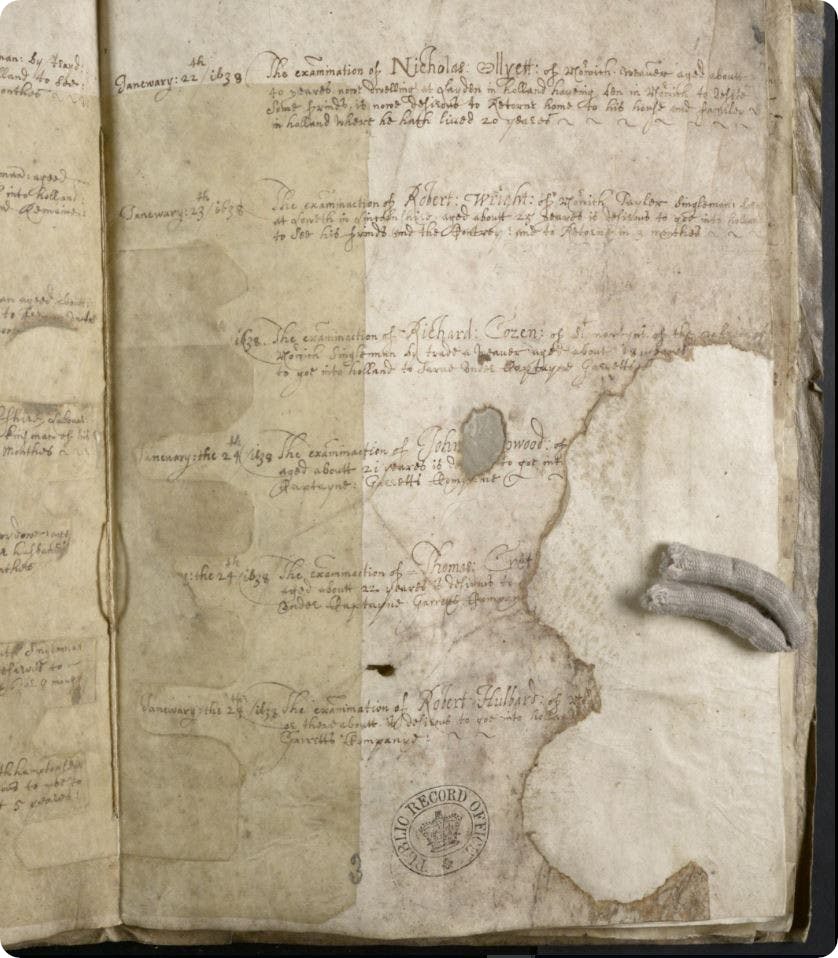
An early migration record from 1638 found in Britain, Registers Of Licences To Pass Beyond The Seas 1573-1677.
Keep in mind that passenger lists are often kept by the departure country. If you have a general idea of when your ancestor emigrated, you can browse ship records by time period to try to locate them.
7. Harness the power of wildcard searches
Online search engines (including Findmypast's) use wildcard tools to help retrieve additional, variant results in your searches. When exploring travel records, this can be massively helpful if your ancestor's name changed due to miscommunication or language differences.
8. Next up, naturalization records...
Naturalization records are the records associated with the process your ancestor went through to become a citizen in the country they decided to settle in. These records often include key details about your ancestors that you might not find anywhere else.
The naturalisation process was long and often tricky – applicants had to declare their intent to settle in a new country, and then pass a waiting period which could take years. After petitioning to become a citizen, their claim was subject to acceptance or denial.
While wealthier people had the resources to support themselves – and perhaps even the connections to secure the acceptance of their petition – this lengthy ordeal was tough for the average Joe. With a family to support and no safety net to fall back on, it was often all riding on the decision of citizenship office bureaucrats.
Naturalisations may also include extra ancestors for your family tree because they often include the family members of those who are applying for naturalisation. If a family member was born in the United States, for example, but their parents were not, their naturalisation could reveal where their parents came from.
Naturalisation records are often more than one page long and sometimes include photographs, so be sure to look through all the pages for extra titbits.
Did your ancestor live in multiple countries throughout their life? Be sure to look for naturalisations from all locations. Each one can reveal more details.
9. Explore old passport applications
Passports became mandatory for travel abroad from the early 20th century onwards. For the earliest recipients, they must have felt novel – the key that unlocked a world of travel to foreign lands.

US passport applications can reveal your ancestor's country of birth.
When applying for a passport, our ancestors had to give key information about themselves and their families, including names, ages, birthdates and birthplaces. This means that our passport application records are a rich source of information. They may prove massively helpful for building your family tree.
10. Expand your horizons: search by family name
It's a good rule of thumb to search for all the members of a family in travel records because vital details could be hidden in any of their individual records. For example, your ancestor's hometown might be listed in their sister's marriage certificate, but not in any of their own documents. Your ancestor's close or even distant relatives can provide additional clues to help you fit the pieces of the puzzle together.
Emigration had more than just a geographic impact on your family - ancestors moving from one place to another has far-reaching social and cultural implications for generations to come. How was your family shaped by the journeys they travelled?
Walk in the footsteps of wandering forebears by diving into our travel and migration records today. Start your family tree to delve deeper and begin making unexpected discoveries about your past.


